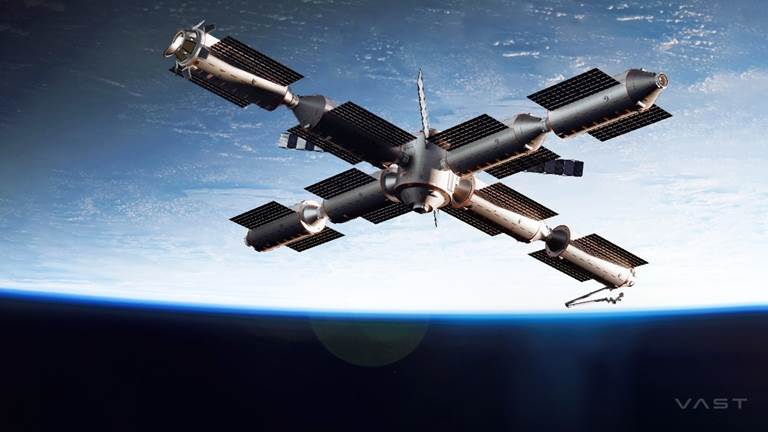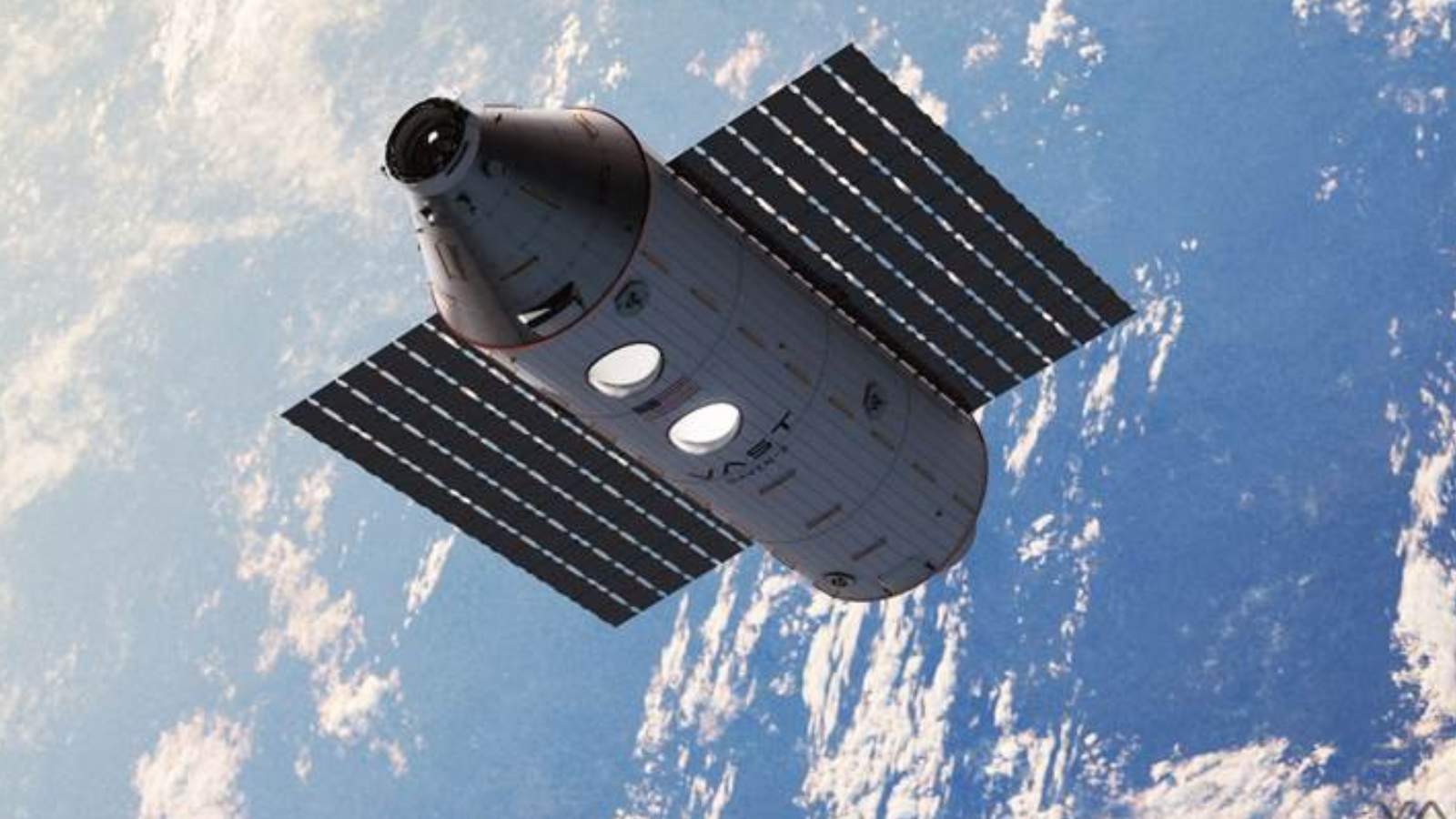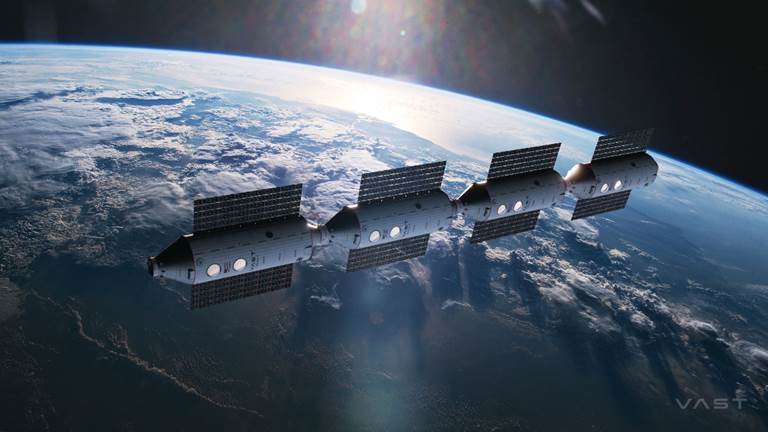Vast Space unveils Haven-2, a private space station to follow the ISS after its fiery end (video)
"This vision of global cooperation in space will create opportunities for scientific and technological advancements, benefiting new and current sovereign partners as well as industries around the world."
The retirement of the International Space Station (ISS) is planned for 2030. With just six years left on the clock, private companies are vying to see their space stations reach low-Earth orbit and become the world's first-ever commercial orbital laboratory.
At the 75th International Astronautical Congress (IAC) held in Milan, Italy, on Monday (Oct. 14), U.S.-based space habitation technology company Vast threw its hat in the ring. The company's CEO, Max Haot, unveiled Haven-2 as a proposed successor to the ISS. In an accompanying press statement, Vast describes the private space station Haven-2 as the "next step in the company's vision to pioneer a path to long-term living and thriving in space."
"Our focus this decade is to win the NASA Commercial LEO Destination (CLD) contract and build the successor to the International Space Station," Haot said in a statement. "To achieve this, we will first demonstrate our capability by building and operating the world's first commercial space station, Haven-1, which is set to launch in 2025."

Vast has developed Haven-2, a NASA-certified version of Haven-1, to be modular, enabling it to be gradually constructed in low-Earth orbit, just like its predecessor, the ISS.
If Haven-2 wins the lucrative NASA CLD contract in 2026, the company projects that the first Haven-2 module could reach low-earth orbit and become fully operational by 2028.
Related: US space science could fall behind China if private successors to ISS are delayed, Congress warns
Haven-2: Starting off small
Following the deployment of this 16-foot-long initial unit, Vast said it would build three more modules and launch them within a two-year period between 2030 and 2032. Each subsequent module will not only expand the commercial space station's volume but also improve Haven-2's life support technologies and payload capabilities.
Get the Space.com Newsletter
Breaking space news, the latest updates on rocket launches, skywatching events and more!
Haven-2 may be a commercial endeavor, but it is being founded with the potential for future international collaboration in mind. Collaboration has been something that has been vital in the success of the ISS.
"Haven-2 is being designed with compatibility in mind, ensuring that international partners can integrate seamlessly into this next-generation platform," Vast advisor and 23-year veteran NASA astronaut Andrew Feustel said in the statement. "This vision of global cooperation in space will create opportunities for scientific and technological advancements, benefiting new and current sovereign partners as well as industries around the world."

One of the key roles of the ISS over its now dwindling lifetime has been to allow scientists to conduct various experiments in the low-gravity or "microgravity" environment of low-Earth orbit. Haven-2 will aim to fulfill this role with its lab module, which Vast said will offer state-of-the-art laboratory facilities to support a wide range of microgravity research and in-space manufacturing meeting with NASA’s Basic Laboratory Capabilities criteria.
When Haven-2 is completed, Vast said that some of its other key features will include a 41-foot-wide (12.5-meter) cupola window, allowing private and space agency astronauts to view Earth and space and capture stunning images. Each module will also have its own 3.6 feet-wide (1.1-meter) windows, bringing the total number of Haven-2 viewing ports up to 16.

On its exterior, Haven-2's payload hosting capabilities will include a robotic arm, visiting vehicle berthing capabilities, external payload airlock, and an extravehicular activity airlock for those spacewalks that have provided so much drama and wonder during the lifetime of the ISS.
"Vast's design is projected to surpass all other proposed on-orbit space stations in terms of volume, functionality, and operational efficiency," the company concluded in the statement. "With unparalleled capabilities, Haven-2 will be the benchmark for next-generation space stations, low-earth orbit economy."
Join our Space Forums to keep talking space on the latest missions, night sky and more! And if you have a news tip, correction or comment, let us know at: community@space.com.

Robert Lea is a science journalist in the U.K. whose articles have been published in Physics World, New Scientist, Astronomy Magazine, All About Space, Newsweek and ZME Science. He also writes about science communication for Elsevier and the European Journal of Physics. Rob holds a bachelor of science degree in physics and astronomy from the U.K.’s Open University. Follow him on Twitter @sciencef1rst.
-
Unclear Engineer This article seems to be an edited down version of an article I have read elsewhere.Reply
A couple of interesting things were deleted from this version of the article:
1. The initial 4 segments will be connected end-to-end. But, then a "hub" section is planned to be launched by SpaceX SuperHeavy, and the initial 4 segments will disconnect from each other and redock as spokes on the hub. Then additional modules will be added onto the ends of the spokes.
2. Vast is conceptualizing an artificial gravity space station, but does not want to make its Haven II version have any gravity-like effects because of the current interest in doing space experiments in "micro gravity". -
skynr13 Reply
I'd like to have a link to that article you're talking about. I didn't always think having the modules end to end like the original design was a great idea. But arranged in a spoke configuration would put my faith back again in Vast and it's Haven 2.Unclear Engineer said:This article seems to be an edited down version of an article I have read elsewhere.
A couple of interesting things were deleted from this version of the article:
1. The initial 4 segments will be connected end-to-end. But, then a "hub" section is planned to be launched by SpaceX SuperHeavy, and the initial 4 segments will disconnect from each other and redock as spokes on the hub. Then additional modules will be added onto the ends of the spokes.
2. Vast is conceptualizing an artificial gravity space station, but does not want to make its Haven II version have any gravity-like effects because of the current interest in doing space experiments in "micro gravity". -
fj.torres Reply
Possibly this one from PC MAG via MSN:skynr13 said:I'd like to have a link to that article you're talking about. I didn't always think having the modules end to end like the original design was a great idea. But arranged in a spoke configuration would put my faith back again in Vast and it's Haven 2.
https://www.msn.com/en-us/news/technology/vast-space-unveils-its-plan-to-replace-the-international-space-station/ar-AA1scy5U?cvid=cd1e14f81c6b47d4b118562b0b497f64&ei=7#
Or maybe the VAST2 announcement at the VAST website.
https://www.vastspace.com/updates/vast-announces-haven-2-its-proposed-space-station-designed-to-succeed-the-international-space-station-iss
The Vast1 module is more of a demonstrator to get in on the NASA contract because one thing it ain't is vast. Hard to see 4 people living there for more than a week, even stretched.
The full aspirational design is more reasonable but they might want to replace the Vast1 design sooner rather than later. By 2026 Starship is going to be operational and lofting STARLAB by 2028. So maybe VAST 2 needs to "plump up" to 7 meters.
Even then, funding for 9 modules is going to be tough to find by 2030. -
Unclear Engineer skynr13, I think I first read it here https://spacenews.com/vast-releases-design-of-haven-2-commercial-space-station/ . Hoping I did not just violate some rule by posting that link to another space news site.Reply









